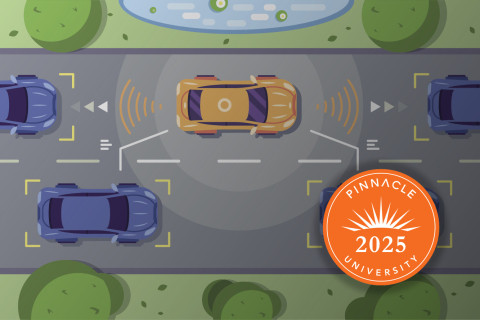
Vehicle Scoring Made Easy
Earlier this year, Pinnacle Actuarial Resources and CARFAX announced the release of a new vehicle scoring and automobile pricing tool called the CARFAX Vehicle Build Score (VBS). Pinnacle Senior Consulting Actuary Gary Wang discusses the value of the VBS solution for automobile insurers.
Q: How does CARFAX’s VBS differ from the historically used symbols-based vehicle rating system?
Like typical vehicle symbols development methods, VBS is based on vehicle characteristics. But it represents an evolution towards a more complete form of vehicle rating. VBS uses the vehicle’s entire 17-digit vehicle identification number (VIN), incorporating build sheet and window sticker information curated by CARFAX related to the VIN. The VIN data allows CARFAX and Pinnacle to develop a VBS that focuses on the risk associated with individual vehicle values, safety features and options. With the VIN, the VBS leverages a depth of data beyond basic vehicle information to include post-factory installed features and new and used car listings data.
Q: How does VBS help companies pricing auto insurance?
In a few key ways. First, VBS can access a deeper and richer mine of vehicle data. CARFAX has a database of more than 35 billion records. That was a lot of data for modelers to parse, but it offered really incisive and useful insights into vehicle attributes and related risk. That includes a specific vehicle’s factory and post-factory installed features. In that way, VBS can help insurers better understand the impacts of a car’s characteristics on risk and price policies appropriately. And the way we developed it, VBS is also a very easy-to-use, understand and communicate score. That can have great value for insurers, above and beyond the VBS’s completeness and accuracy.
Q: How do you develop a VBS?
It is a secret sauce, but not a black box. The VBS does deploy generalized linear models (GLMs) as part of its development. But GLMs have limits, notably when processing complex interactions between different variables. The VBS uses advanced machine learning techniques to capture more details and patterns within data. What this enables is a more sophisticated score and a more thorough assessment of a vehicle’s risk. Again, it is the ability to assess risk via the interactions and relationships within different variables that makes VBS so useful. The VBS model works to capture that interplay and dialogue within the data for a more detailed picture. It can be integrated into existing insurance models easily.
Q: What is next for the VBS?
With regards to the product, the VBS will evolve with every new model year. Symbol rating systems have to update tables as new models and model year changes are rolled out. With regards to regulatory approvals, the VBS is being filed and approved with state regulators across the United States for approvals. We are moving towards a national rollout as quickly as the regulatory process will allow.
(Published in Best's Review by AM Best)



